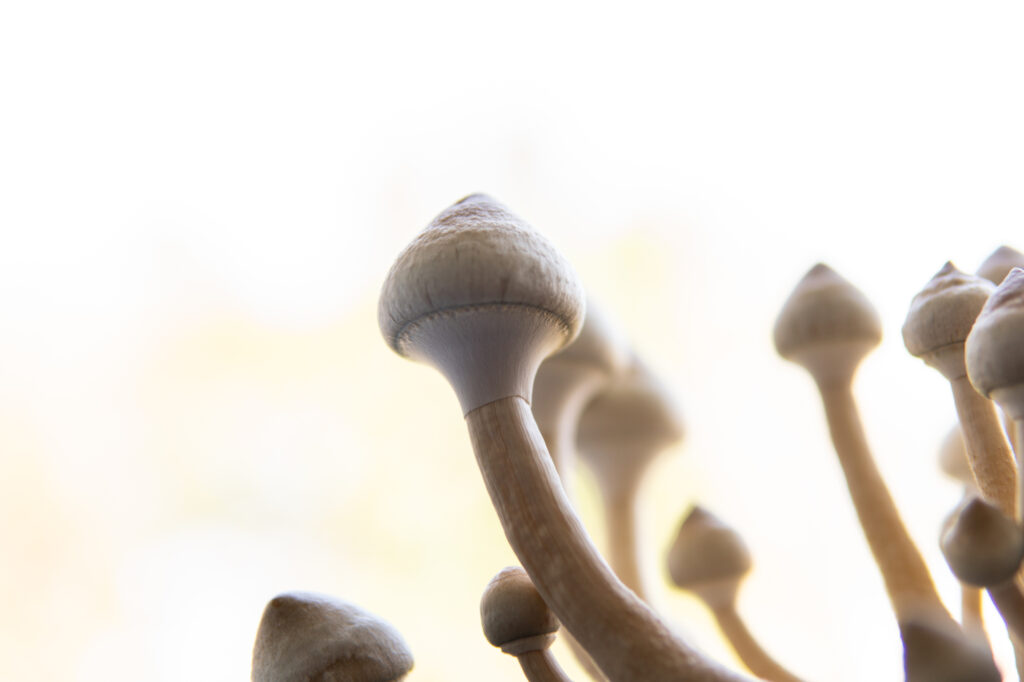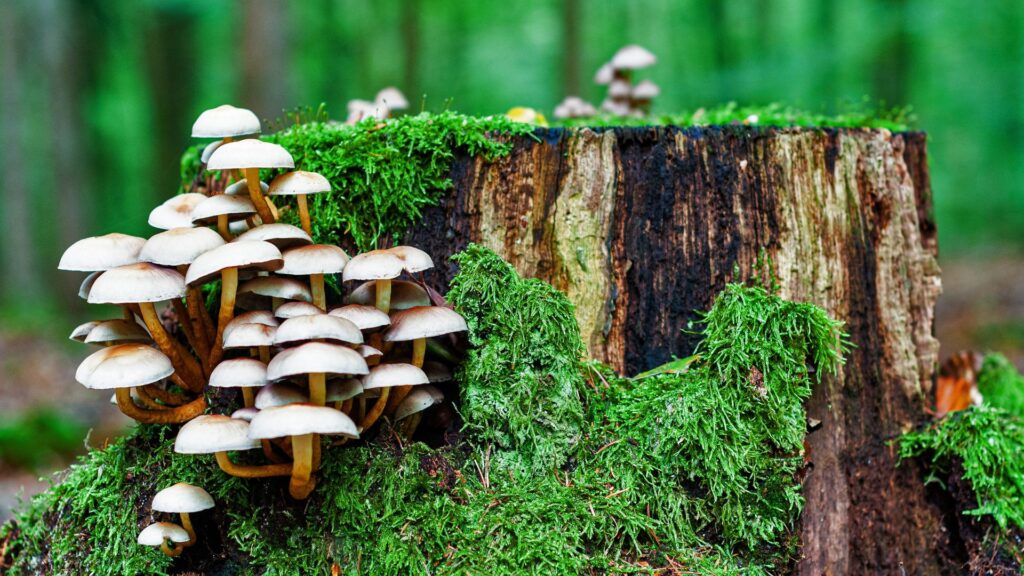You might not know that there are actually hundreds of different varieties of what we call magic mushrooms. One thing that these different types of magic mushroom strains all have in common is psilocybin. Of course, psilocybin is the substance that makes these mushrooms so magical. So what are some of these magic mushroom strains, and what makes them different from each other? In this article, we’ll go over the names of some of the most popular psychedelic mushroom names people are growing today. Additionally, we’ll help you out with your magic mushroom identification skills.

What Are Psilocybin Mushrooms?
If you’re new here, you might be wondering what exactly are magic mushrooms? Like other mushrooms, magic mushrooms are naturally occurring fungi. The difference between magic mushrooms and regular ones is that these contain psilocybin, as we mentioned before. Psilocybin is a hallucinogenic chemical that affects the neurotransmitters in your brain. Historically, magic mushrooms have been used by humans for spiritual and recreational purposes. However, recent research suggests that there may be some therapeutic benefits to consuming magic mushrooms.
Why Grow Magic Mushrooms?
Growing magic mushrooms is a great hobby to take up. First, watching something grow due to your own efforts to cultivate it can be very rewarding. Others might be interested in growing magic mushrooms for taxonomy or microscopy purposes. Additionally, research indicates that magic mushrooms may have a number of health benefits when consumed. While there has not been much research done in this field, some studies have shown these mushrooms to be helpful with anxiety and depression. Additionally, there is ongoing research that currently studies how magic mushrooms might be able to treat other illnesses and ailments. Some of these illnesses include OCD, PTSD, drug and alcohol addiction, Lyme disease, cluster headaches, Alzheimer’s disease, dementia, and more. These are just a few reasons one might be interested in starting to grow magic mushrooms.

Psychedelic Mushroom Names: Golden Caps
Golden cap mushrooms are the most popular type of magic mushroom. Golden cap mushrooms are typically what you see represented in mainstream culture–from movies and television to pictures on t-shirts. Golden cap mushrooms are also called Psilocybe cubensis, and it is so ubiquitous mainly because it is easy to grow. This is true even for people who are first-time growers. So, you might be more inclined to purchase golden cap spores if you don’t have a lot of experience. This type of magic mushroom grows in the United States, Mexico, Central and South America, and in the West Indies. Another reason that these mushrooms are so widespread in media might also be because they’re easy to grow indoors. To help you with your magic mushroom identification, let’s talk about some of the more popular golden cap strains.
Penis Envy
When it comes to psychedelic mushroom names, this one is definitely one of the stranger ones. As the name suggests, this type of mushroom is known for its rounded cap and thick stem. Penis Envy mushrooms are known to be especially potent and are often used for microdosing for this reason. However, they can be more challenging to cultivate and less tolerant to contamination.
Golden Teacher
Golden Teacher mushrooms are the most popular for first-time growers. This is because of how easy it is to grow them in a controlled environment at home. These types of magic mushrooms in contrast to Penis Envy mushrooms are moderately strong. They are golden on their tops with yellow dots, which is what seems to have inspired their name. The fact that they are less potent than other strains makes them good for introducing people to the effects of psilocybin.
Other Psilocybe Cubensis Strains
Here are some of the other golden cap magic mushroom strains you might be interested in growing.
B+
This strain has a pretty interesting history behind it. Most Psilocybe cubensis strains seemed to have been discovered in Mexico and Central America, but B+ was discovered in Florida. Not only that, but this strain was found standing over fifteen inches tall. It’s one of the easier strains to cultivate since it is resistant to cold and quick to colonize. Plus, it’s also popular for being particularly potent. The physical traits that stick out about the B+ strain are their caramel-covered caps, long stems, and large size.
Cambodian
Another strain of Psilocybe cubensis that gets a lot of love is the Cambodian mushroom. The Cambodia mushroom is well-known for its extremely fast colonization and for growing well in warm climates. It is also known for being one of the most robust and disease-resistant strains. Plus, this strain of golden cap mushroom can grow even when conditions are less than ideal. You might not be surprised to learn that this mushroom was actually discovered in Cambodia. A fun fact about this strain is that it was found near Angkor Wat. Angkor Wat is considered one of the largest religious temples in the world. The Cambodian mushroom is distinct for its pale brown cap and webby partial veil.

Ready to Start Growing?
Now that you’ve got a little bit of magic mushroom identification on your belt, it’s time to start growing. If you are someone who is interested in growing magic mushrooms, we highly recommend starting with golden caps. Of course, as you gain more experience as a grower, you can branch out to different strains and types of mushrooms. Outside of golden caps, there are liberty cap mushrooms, wavy cap mushrooms, flying saucer mushrooms, and many more. Each type and each strain has its own unique pros and cons. It’s important to do some more research before diving head-first into a strain that isn’t so easy to grow.
Whether you’re a beginner or a veteran grower, there’s something for everyone at Top Mushroom Spores. We sell many different kinds of psilocybin mushroom spores for scientific purposes. If you have any questions about mushroom spores or growing magic mushrooms, don’t hesitate to reach out. Plus, start your growing journey today by purchasing from Top Mushroom Spores. Check out our website for more details.